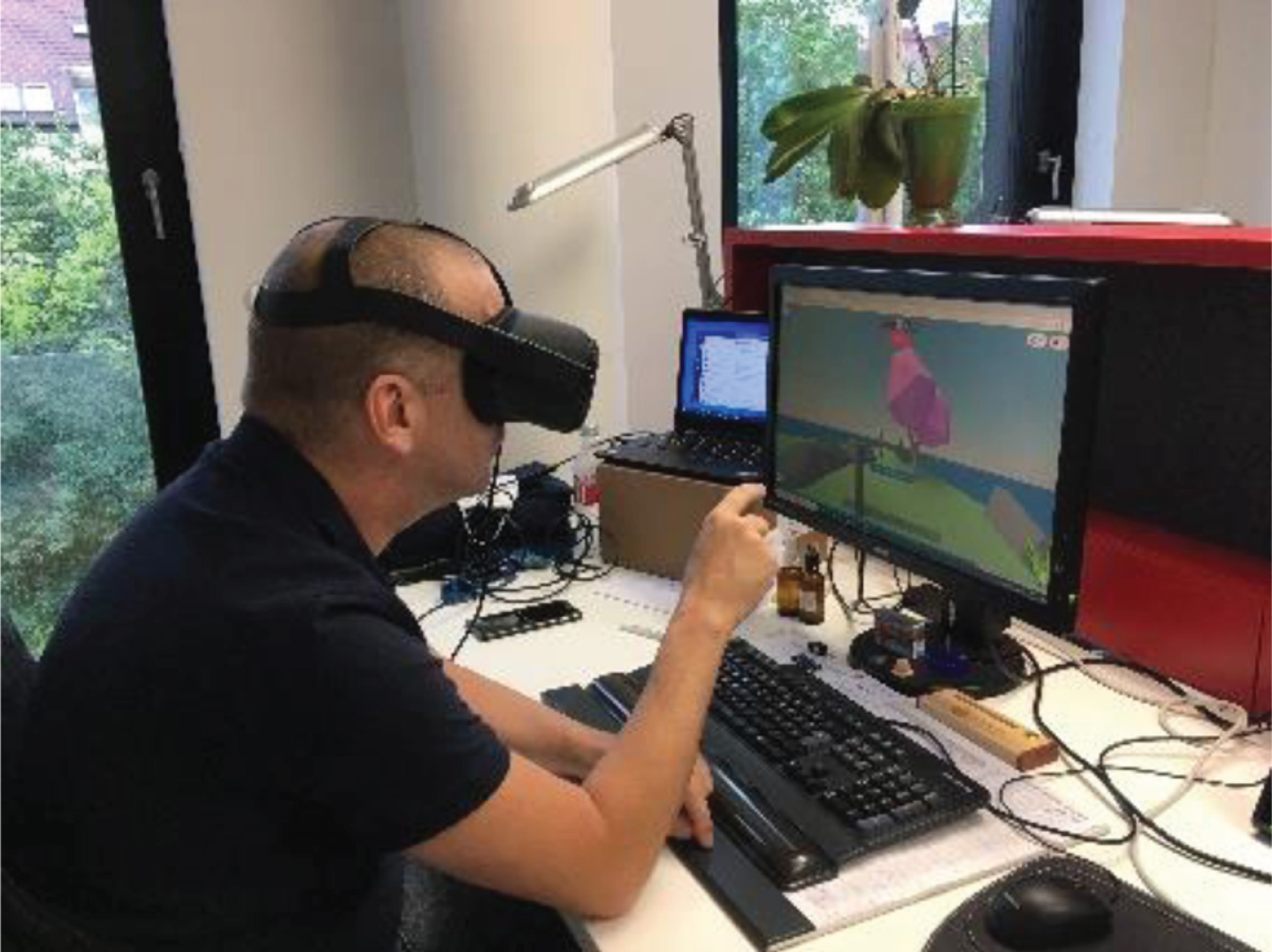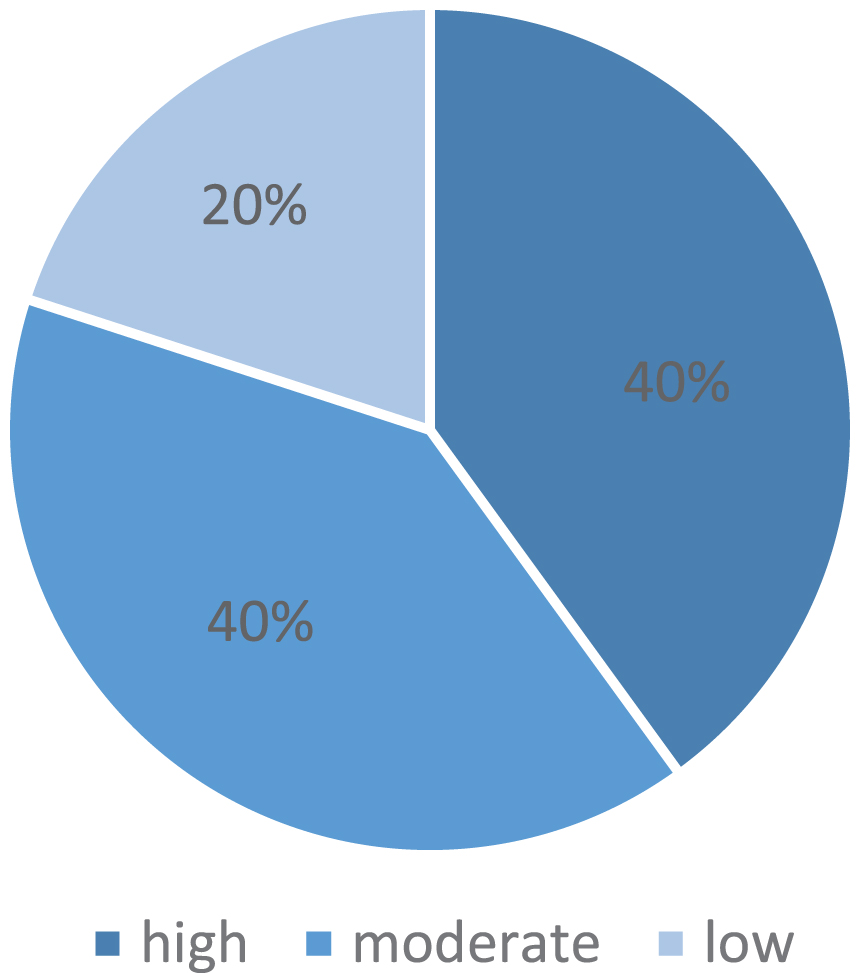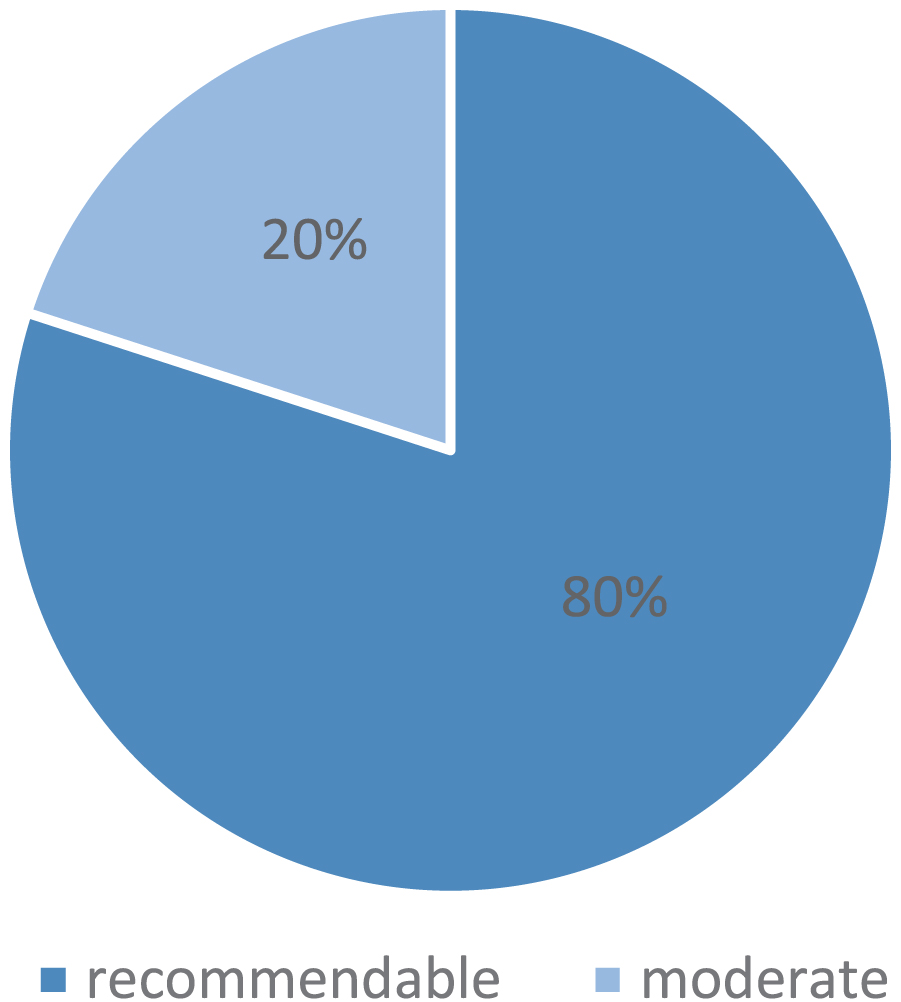A debate about implementing immersive technology for higher education: Pre-study examining the usability of virtual reality for lectures
Abstract
BACKGROUND:
As the COVID-pandemic has shown, the need for innovative (digitalized) solutions is in high demand across almost every field of interest. The implementation of advanced technologies in higher education provides an intriguing opportunity to expand its scope by reaching new audiences as well as ensuring a high quality of learning outcome.
OBJECTIVE:
In this article we tried to examine if virtual reality can be a suitable option by placing lectures into a virtual setup.
METHODS:
First, we explored the theoretical background if and how virtual reality has been adapted for usage in higher education. We then asked five lecturers from the IMC University of Applied Sciences Krems to test a virtual environment (Mozilla Hubs) and evaluate the platform for their teaching purposes.
RESULTS:
Among one of the results was, that 80 percent would recommend using the platform for lectures to their colleagues. Due to the small sample size the findings need to be further evaluated.
CONCLUSIONS:
In the foreseeable future virtual reality will become a valuable teaching assistance in higher education. Findings show that the response rate when training with virtual reality applications is much higher than to common studying methods.
 Matej Hopp, MA earned his Master’s Degree from the SRH Heidelberg/Germany and is currently working at the IMC University of Applied Sciences Krems. He is a member of the research project Scan2VR as well as part of the House of Digitalization, the flagship project of the Lower Austrian Digitalization strategy. In addition, he is working at DIHOST, a project offering a comprehensive service program to increase the ability and speed of transformation of small and medium-sized enterprises in Eastern Austria towards digital innovations.
Matej Hopp, MA earned his Master’s Degree from the SRH Heidelberg/Germany and is currently working at the IMC University of Applied Sciences Krems. He is a member of the research project Scan2VR as well as part of the House of Digitalization, the flagship project of the Lower Austrian Digitalization strategy. In addition, he is working at DIHOST, a project offering a comprehensive service program to increase the ability and speed of transformation of small and medium-sized enterprises in Eastern Austria towards digital innovations.
 Sandra Pfiel is a media technology and administrative assistant at the IMC University of Applied Sciences Krems. She is a member of the research project Scan2VR and has been responsible for planning and conducting the VR fair 2019, Austrias biggest VR fair, at the IMC. Her research interests are photogrammetry, scanning and digitalization.
Sandra Pfiel is a media technology and administrative assistant at the IMC University of Applied Sciences Krems. She is a member of the research project Scan2VR and has been responsible for planning and conducting the VR fair 2019, Austrias biggest VR fair, at the IMC. Her research interests are photogrammetry, scanning and digitalization.
 Florian Tiefenbacher, BA currently works as a Virtual Reality software developer at the IMC University of Applied Sciences in Krems. He obtained his bachelor’s degree in Business Informatics from the Ferdinand Porsche Fernfachhochschule in Wiener Neustadt and wrote his bachelor thesis on VR gamification in higher education. His research interests include 3D-Modeling, Interaction- and Game Design.
Florian Tiefenbacher, BA currently works as a Virtual Reality software developer at the IMC University of Applied Sciences in Krems. He obtained his bachelor’s degree in Business Informatics from the Ferdinand Porsche Fernfachhochschule in Wiener Neustadt and wrote his bachelor thesis on VR gamification in higher education. His research interests include 3D-Modeling, Interaction- and Game Design.
 René Mario Schuster, MSc works at the IMC University of Applied Sciences Krems as a Software Developer. He obtained his Master of Science degree, Digital Mediatechnologies, from FH Sankt Pölten University. He has ample insight on the topics of Virtual Reality, 3D modeling and programming in various programming languages.
René Mario Schuster, MSc works at the IMC University of Applied Sciences Krems as a Software Developer. He obtained his Master of Science degree, Digital Mediatechnologies, from FH Sankt Pölten University. He has ample insight on the topics of Virtual Reality, 3D modeling and programming in various programming languages.
 Prof. (FH) Mag. Michael Reiner, MCT, MCAS, Michael Reiner is Professor at the institute of digitalization at the IMC University of Applied Sciences Krems and President of ECQA as well as CEO of the ECQA ltd. He gives lectures on office products, digital communication and social media, databases as well as modern IT. His current field of research deals with innovation management for SMEs using virtual/augmented reality, where he develops application leading a team of experts. In the year 2009 Michael was one of the founders of the ECQA (European management people’s certificates). Since 2015 he is also the CEO of the ECQA Ltd.
Prof. (FH) Mag. Michael Reiner, MCT, MCAS, Michael Reiner is Professor at the institute of digitalization at the IMC University of Applied Sciences Krems and President of ECQA as well as CEO of the ECQA ltd. He gives lectures on office products, digital communication and social media, databases as well as modern IT. His current field of research deals with innovation management for SMEs using virtual/augmented reality, where he develops application leading a team of experts. In the year 2009 Michael was one of the founders of the ECQA (European management people’s certificates). Since 2015 he is also the CEO of the ECQA Ltd.
1Introduction
Along various different industries, digitalization has impacted the sector of higher education for quite some time but “the digitalization of higher education is still evolving” [1].
As the COVID-19 pandemic1 has captured the world by storm, the rapid spread of the virus has had significant impact on a global scale. Countless companies as well as many educational institutions (e.g. kinder garden, schools, universities) were abruptly forced to close their businesses to help stop spreading the virus even further making a faster implementation of digitalized processes even more important. Since the early 1990s, profound changes in the business environment have stimulated the emergence of new organizational forms such as working in virtual teams [2].
Part of the steadily evolving digital spectrum is the increasing growth of usage in immersive technology, such as augmented reality (AR), virtual reality (VR), mixed reality or 360° videos. International Data Corp. (IDC) projects the spending on AR/VR products and services will soar up to nearly $160 billion2 in 2021 [3], illustrating the immense growth and usage potential in this segment.
According to research in multiple fields, for example education [4, 5], marketing [6], entertainment [7], and healthcare [8], has shown that the use of immersive technologies enhances learning experiences [9], fosters participation in collaborative activity [10], and increases creativity and engagement [11].
The emerging utilization of immersive technologies in the education sector has provided an effective utility for promoting the learning of various subjects [12].
2Theoretical background and hypothesis
Djikhy & Moustaghfir (2019) suggest it is necessary [to create] conditions for knowledge transfer and leverage on faculty expertise to generate innovation and performance outcomes. A rewarding strategy should be implemented to foster collaborative working processes and synergetic research initiatives, while encouraging faculty to transcend the individual teaching assignments and to demonstrate openness towards collaborating with others [13].
In recent years, VR has gained a lot of popularity in various fields and provides an intriguing opportunity for “academic institutions to explore the benefits of VR for the teaching-learning process” [14]. With the utilization of computer visualization techniques, virtual field trips have potential advantages for education such as displaying trips to inaccessible areas, presenting scenes from a variety of aspects and scales, enhancing and expanding learning experiences, providing a preview or review of real field trips, and assisting in understanding complex processes with the supplement of additional information and explanation [15, 16].
When it comes to VR platforms (or in this case VR Chatrooms) already there are lots of different providers available, sometimes making it difficult for potential users to figure out what platform suits their specific needs best. Especially considering the importance of being able to conduct the lectures in a reliable and comfortable setting. Part of this setting is also the well-being whilst actively being inside in a virtual setup. It is worth noting, that some platforms might not be considered feasible due to fact that certain participants get sick by moving inside a virtual environment. “Some VR scenes have inconsistent focal distances among all objects. As a result, continuous accommodation without changing eye vergence is required; the disruption between eye vergence and accommodation may cause visual inconvenience. In addition, the use of VR is associated with several adverse effects including dizziness, headache, and sickness” [17].
In order to give a small outlook of possibilities we decided on five different VR platforms to take a closer look at (Alt Space VR, Bigscreen, Mozilla Hubs, Neos VR and Facebook Spaces). Each platform has its advantages as well as disadvantages making the selection of choice not an obvious one but dependable on the preferred learning outcome.
From a user perspective it is to figure out how much previous knowledge is needed in order to navigate through a virtual space while communicating respectively lecturing/learning.
The purpose of this pre-study is to further explore the assumption of VR providing a suitable option when it comes to enhance the lessons from inside a classroom into a virtual setting. Therefore, following questions need to be examined:
– What suitable VR platforms for higher education already exist?
– How they differ from each other?
– Is previous knowledge of VR applications necessary (for lectors as well as students)?
– How user-friendly is the VR environment? Does it enhance the learning outcome?
Our hypothesis is that lecturing using VR is more effective in achieving learning outcomes than traditional training methods (e.g. in a classroom or through non VR experiences).
3Methodology
3.1Arguments based on previous studies
The use of VR technology for enhancing the learning process has become quite popular and seems to be very efficient in terms of learning outcome. According to a recent study by PriceWaterhouseCoopers (PWC) “v-learners were up to 275% more confident to act on what they learned after training—a 40% improvement over classroom and 35% improvement over e-learn. V-learners were up to four times more focused than e-learners. They completed training on average four times faster than classroom training and 1.5 times faster than e-learn. V-learners were 3.75 times more emotionally connected to the content than classroom learners and 2.3 times more connected than e-learners. On top of those benefits, v-learn was estimated to be more cost-effective than classroom or e-learning modalities when delivered at scale.” [18]. Although the focus of this study relied mainly on improvements in soft skill development, the results impressively underline the many positive effects VR can have as part of a teaching routine.
Besides the findings of the PWC study there is a great agreement on VR being a valuable asset in enhancing lectures. So called Remote labs can be beneficial to students, teachers, and institutions in higher education [19].
3.2Outlook of VR platforms
As previously mentioned, one part of this pre-study was to take a closer look at various VR platforms. Due to the strict time schedule the researchers decided to limit the number to five providers. It must be mentioned, that this segment is constantly evolving and therefore the list of VR spaces is growing almost on a daily basis.
3.2.1Alt space VR
Alt Space VR (ASVR) was founded in 2013 and focuses on programming meeting spaces in virtual reality, where users can have conversations, watch videos, play games, and browse the Internet. When searching for a VR Space, ASVR is usually one of the first finds and gets recommended quite a lot.
ASVR is mainly used as a social and event space. You can choose between entering various different events as well as being able to move into specifically designed worlds (e.g. it can host events with +170 speakers, +6000 visitors on 5 virtual platforms).
It is considered to be an easy-to-use virtual platform
3.2.2Mozilla Hubs
Mozilla Hubs or just Hubs is a very agile and customizable VR tool by Mozilla. It is easy to set up and usually requires limited to none previous knowledge in order move through the platform. One of the limiting factors seems to be number of people to be in one room with (in the free version). Right now, the limit is set to 24 persons, but at around 12 people the system can become slow and problematic in performance.
3.2.3Bigscreen
Bigscreen is a venture-backed startup designed for cinematic experiences in VR on-demand. You can watch with friends from around the globe and interact with one another. Due to the growing number of channels it will become one of the main VR platforms in the near future.
3.2.4Neos VR
When it comes to quality, Neos VR (NVR) doesn’t need to hide but it still lacks exposure to be mentioned among the major players among VR platforms. It allows its users to create tools themselves to use within the platform which makes NVR very popular among developers and such. Apparently, there are plans to create some kind of virtual currency at some point.
3.2.5Facebook spaces
As one of the biggest company’s worldwide, Facebook has been tackling many futuristic core issues, VR being one of them. With the acquisition of Oculus it was only a matter of time for Facebook to start their own VR platform. Facebook Spaces (FS) is seen as an extended virtual arm to its core business, their social media platform, enabling users to communicate and interact with one another now in a VR setting. Among others, FS is playing this field very early on to be on the forefront when it matters.
3.3Questionnaire and qualitative interview
As part of this pre-study we chose five lectors with various teaching backgrounds to test a virtual environment, in our testing environment we’ve decided on Mozilla Hubs as the VR chat room of choice, and provide us with feedback in form of a questionnaire of how they perceived the experience personally as well as how they feel their students would profit from the implementation of VR in their classes. Our participants had the choice to either enter the VR chat room a) through the desktop version (https://hubs.mozilla.com/) or b) by using VR glasses. Almost all of our participants tested the VR chat room through the desktop version with one participant testing both entry possibilities (compare Table 2). The advantage by entering through the desktop version is based on the fact that 1) not every (potential) user possesses VR googles on hand as well as 2) they were less likely to suffer from motion sickness by moving through a virtual environment. The phenomenon of motion sickness by using VR glasses has been discussed in one of our previous studies and is attributed to exposure to motion or to aspects of a moving environment, although it is generally accepted that stimulation of the vestibular system is necessary to induce motion sickness in humans [20].
Table 1
Comparison of the tested VR platforms
| ASVR | Hubs | Bigscreen | Neos VR | Spaces | |
| URL | www.altvr.com | www.hubs.mozilla.com/ | www.bigscreenvr.com | www.neosvr.com | www.facebook.com/spaces |
| Specifics | social and event space; easy to use; limitless users | agile and customizable; variety of rooms; maximum of 24 persons | focus on cinematic experiences; | users can create VR tools within the application | extended virtual arm to its core business |
Table 2
Markus Golla testing Mozilla Hubs
 |
Additionally, we carried out an expert interview with Markus Golla (Programme Director General Nursing at the IMC FH Krems) to provide us with qualitative feedback of how he perceives the usability of virtual reality for lectures. Mr. Golla has been exposed to the technology of VR before and has been very open minded about using the immersive character of it to introduce certain topics to his students.
4Results
We’ve split our questionnaire into three parts. In part one we’ve asked our participants general questions such as age and gender. All of our participants were male and between 36 and 65 years old.
In part two we wanted to know if our participants have had previous experiences regarding VR and how they assess the degree of immersion for higher education as well as its usefulness for lectures. 40 percent of the participants find the degree of immersion to be high for higher education and 60 percent find the implementation of VR to be useful for lectures.
Fig.1
How high would you describe the immersion level of this technology for use as a teaching tool?.

In part three, our participants were asked to test the VR platform Mozilla Hubs and give us feedback of how they coped with the platform estimating if it would be a suitable option for their lectures. According to their answers, the platform itself is easy to use as well as to navigate through it. 60 percent would use it for their lectures. In this context, we’ve also asked the lecturers how many continuous minutes they would use it. 60 percent would use it between 10 to 30 minutes. 40 percent would even use it for longer than an hour. For daily use most answered between two to three hours as the maximum time they would spend with it.
All along, 80 percent would recommend using the platform for lectures to colleagues.
Fig.2
Would you recommend using a VR chat room to other lecturers?.

In addition to our questionnaire we’ve interviewed Markus Golla (Programme Director General Nursing at the IMC FH Krems) about his estimations regarding the implementation of VR in his lectures. Mr. Golla was very impressed by the high level of interactivity between users as well as the possibility to design multiple rooms for different studying purposes. He was very intrigued by the possibility to create various video content for different groups/rooms in connection with being able to collaborate on it later on. One negative aspect is the limited amount of people being able to use Mozilla Hubs at once. So far, the maximum amount of people is at 24. Unfortunately, symptoms of overload already start at approximately half of the groups maximum size. Especially for bigger classes this turns out to be a problem which can be a (very) limiting factor if not fixed accordingly. All in all, Mr. Golla is very fond of the possibility of using VR platforms such as Mozilla Hubs for his upcoming lectures. He feels it definitely will enhance the learning output for his students.
5Conclusion
The purpose of this paper was to illustrate the possible implementation of VR in higher education as an intriguing feature which both parties, lecturers as well as students, can profit from. The findings of this pre-study provide enough evidence to further investigate this topic as 80 percent of the participating lecturers would recommend VR chat rooms to other lecturers for their classes. For further investigation following improvements must be made:
5.1Extend sample size
The results of this pre-study are limited due to the small sample size of participants (only five questionnaires were filled out). Further studies must extend the sample size to a critical minimum (e.g. 50 to 100 participants). Adding to that, further studies regarding this topic need to be extended to lecturers AND students as well as. The use of immersive learning technology can only be of success if both participating parties feel comfortable using these tools.
5.2Extend testing of VR chat rooms
In this pre-study, we’ve limited testing to only one VR chat room due to timely reasons. Further studies need to include a bigger sample size of tested VR chat rooms in order to provide a qualitative review of possibilities.
5.3Test VR environment in actual lectures
Part of a qualitative study should include a use case under “real life” circumstances (e.g. like lecturing classes in an actual VR setting) in order to investigate the pros and cons of lecturing in VR.
Given the scientific evidence the learning output for v-learners is higher compared to e-learners [18] making the implementation of VR sessions into the curriculum enticing, to say the least. According to Dr. Peter Looker there is still a number of barriers to overcome e.g. the didactic model of teaching is stubbornly persistent both at universities and in schools or that there a still too many final written exams in our current student assessment system. The Interdisciplinary aspect will become central to modern institutions and VR has the potential to lead the way in this direction [21]. Already, many organizations have launched virtual communities to promote Knowledge Sharing (KS) among their employees as it enhances creativity, increase the success of the organizations, facilitates KS between users, and optimize the learning effect [22].
Author contributions
CONCEPTION: Matej Hopp and Michael Reiner
METHODOLOGY: Matej Hopp and Michael Reiner
DATA COLLECTION: Sandra Pfiel and Florian Tiefenbacher
INTERPRETATION OR ANALYSIS OF DATA: Matej Hopp and René Schuster
PREPARATION OF THE MANUSCRIPT: Matej Hopp, Sandra Pfiel and Florian Tiefenbacher
REVISION FOR IMPORTANT INTELLECTUAL CONTENT: Matej Hopp, René Schuster and Michael Reiner
SUPERVISION: Michael Reiner
SUPPLEMENTARY MATERIAL
{ label (or @symbol) needed for fn } The Appendix is available in the electronic version of this article: https://dx.doi.org/10.3233/HSM-201058.
References
[1] | Dussauge P . https://www.hec.edu,“ 18 Juli 2018. [Online]. Available: https://www.hec.edu/en/news-room/impact-digitalization-higher-education |
[2] | Mokline B . Managing Communicative Conflicts and Relational Challenges in Virtual Teams. Human Systems Management. (2017) ;2: :115–27. |
[3] | Deloitte, Deloitte.com,“ December 2017. [Online]. Available: https://www2.deloitte.com/us/en/insights/focus/tech-trends/2018/immersive-technologies-digital-reality.html |
[4] | Frank JA , Kapila V . Mixed-reality learning environments: Integrating mobile interfaces with laboratory test-beds. Computers and Education. 2017;88-104. |
[5] | Pribeanu C , Balog A , Iordache DD . Measuring the perceived quality of an AR-based learning application: a multidimensional model. Interactive Learning Environments. 2016;482-95. |
[6] | Huang T-L , Liao S-L . Creating e-shopping multisensory flowexperience through augmented-reality interactive technology. Internet Research. 2017;449-75. |
[7] | Arino J-J , Juan M-C , Gil-Gómez J-A , Mollá R . A comparative study using an autostereoscopic display with augmented and virtual reality. Behaviour & Information Technology. (2014) ;33: (6):646–55. |
[8] | Zhao MY , Ong SK , Nee AYC . An Augmented Reality-Assisted Therapeutic Healthcare Exercise System Based on Bare-Hand Interaction, International Journal of Human–Computer Interaction. (2016) ;32: (9):708–21. |
[9] | Huang T-C , Chen CC , Chou Y-W . Animating eco-education: To see, feel, and discover in an augmented reality-based experiential learning environment. Computers & Education. 2016;72-82. |
[10] | Fonseca D , Martí N , Redondo E , Navarro I . Relationship between student profile, tool use, participation, and academic performance with the use of Augmented Reality technology for visualized architecture models. Computers in Human Behavior. (2014) ;31: (1):434–45. |
[11] | Huang H-M , Rauch U , Liaw S-S . Investigating Learners’ Attitudes toward Virtual Reality Learning Environments: Based on a Constructivist Approach. Computers & Education. (2010) ;3: :1171–82. |
[12] | Al-Samarraie H , Saeed N . A systematic review of cloud computing tools for collaborative learning: Opportunities and challenges to the blended-learning environment. Computers and Education. (2018) ;124: :77–91. |
[13] | Djikhy S , Moustaghfir K . International Faculty, Knowledge Transfer, and Innovation in Higher Education: A Human Resource Development Perspective. Human Systems Management. (2019) ;4: :423–31. |
[14] | Srimadhaven T , Chris Junni A , Naga H , Jessenth Ebenezer S , Shabari Girish S , Priyaadharshini M . Learning Analytics: Virtual Reality for Programming Course in Higher Education. Procedia Computer Science. (2020) ;172: :433–7. |
[15] | Puhek M , Perše M , Šorgo A . Comparison between a real field trip and a virtual field trip in a nature preserve: Knowledge gained in biology and ecology. Journal of Baltic Science Education. (2012) ;2: :164–74. |
[16] | Çalışkan O . Virtual field trips in education of earth and environmental sciences. Procedia Social and Behavioral Sciences. 2011;3239-43. |
[17] | SoHu P , GyuChang L . Full-immersion virtual reality: Adverse effects related to static balance. Neuroscience Letters. 2020;733. |
[18] | PWC. The Effectiveness ofVirtual Reality Soft Skills Training in the Enterprise. 2020. |
[19] | Lysanne SP , Pengyue G , Nadira S , Wilfried A . Effects of remote labs on cognitive, behavioral, and affective learning outcomes in higher education, Bd. 140, Computers & Education, 2019, pp. 103596. |
[20] | IMC FH Krems. Investigation of motion sickness when using the OmniDeck compared to other locomotion techniques in VR, März 2020. |
[21] | eon reality, 28 February 2020. [Online]. Available: https://eonreality.com/how-can-vr-and-ar-transform-higher-education/. [Zugriff am 06 July 2020]. |
[22] | Rajabion L , Nazari N , Bandarchi M , Farashiani A , Haddad A . Knowledge sharing mechanisms in virtual communities: A review of the current literature and recommendations for future research. Human Systems Management. (2019) ;38: (4):365–84. |
[23] | WHO, WHO.int, June 2020. [Online]. Available: https://www.who.int/docs/default-source/coronaviruse/situation-reports/20200628-covid-19-sitrep-160.pdf?sfvrsn=2fe1c658_2 |
Notes
1 More than 9.8 million infections and almost 500.000 deaths worldwide by June 28th 2020 [22]
2 From $9.1 billion in 2017




